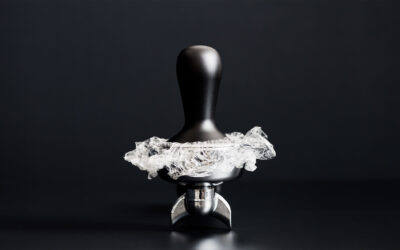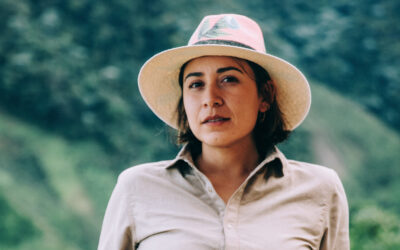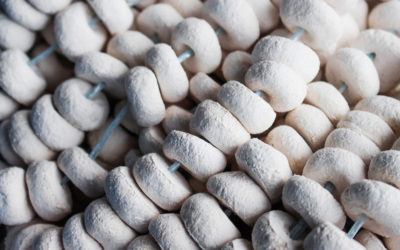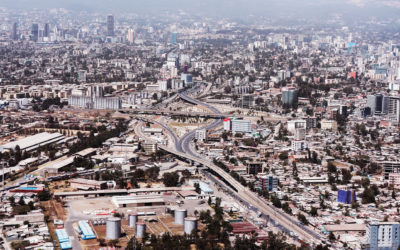What We Taste When We Taste Acidity
New research published this week, however, suggests that the levels of many of the organic acids found in brewed coffee are so low as to be essentially undetectable (Birke Rune et al 2023).
Iced Latte Art
Cold foam has become pretty popular over the last few years, and yet, visually, cold foam lattes are firmly stuck in the 1980s. In other words: a tall, layered drink in a glass, topped with a spoonful of stiff foam like whipped cream. Wouldn’t it be great if…
Wet Weiss for Espresso
As with all our best and wildest experiments, our investigation of Wet Weiss for espresso began with a conversation with multidisciplinary industrial scientist Professor Abbott. He suggested that adding some water before tamping might allow us to pack the bed of coffee more tightly together.
Pass the Espresso on the Left Hand Side
If espresso drops unevenly from the spouts of your portafilter, don’t assume it’s down to bad tamping or bad القُرص prep. More importantly — don’t assume that just because the coffee drops evenly from the spouts, that means that your tamping was perfect!
What’s the Deal with Cryodesiccation?
This year, the Australian champion Anthony Douglas took things a step further with his ‘cryodesiccation’ technique. The process allowed him to make an even more concentrated milk. Anthony paired his concentrated milk with an anaerobic natural Sidra from Finca El Diviso, and together with…
The Evaporation Front
In the last few lessons of our علوم التحميص (قيد الترجمة) course, we’ve been exploring the evaporation front that forms inside coffee beans as they roast. In coffee roasting this phenomenon has an almost mythical status. It has even been touted as a possible cause of first crack, but there’s very little direct study on this topic, and a whole lot of conjecture. In this post…
A Year in the Deep Freeze
Freezing coffee has been part of the specialty barista’s arsenal for some time now. Ever since we discovered the benefits of grinding coffee from frozen, we’ve been keen advocates of الفراغ-sealing small amounts of roasted coffee, so that you can keep that rare and expensive microlot on ice, and always have something ready for a special occasion.
Who Really Invented the Air Roaster?
The invention of the air roaster revolutionised coffee roasting, allowing faster roasts on larger scales than had ever been possible before. In the decades since it was invented, the air roaster became hugely important in industrial coffee roasting — although the classic drum roaster remains the machine of choice for most smaller-scale roasteries …
The Possibly Lactic Process
The two main players in wild coffee fermentations are yeasts and lactic acid bacteria (LAB). LAB are a broad group of bacteria species that ferment glucose into lactic acid and, in some cases, ethanol. Along the way, LAB produce a lot of delicious flavour compounds — esters, ketones, and aldehydes — that can lend coffee distinctive floral, fruity, creamy, and buttery notes…
Wet Weiss Distribution
If you have ever ground your own coffee, then you’ve probably tried the Weiss Distribution Technique (WDT). Possibly even without realising you were doing something that had a name, you might have grabbed a paper clip and done a little القُرص raking just for the pure catharsis of breaking up those clumps of coffee grounds. But have you ever tried doing WDT in wet coffee?
Post-Roast Sorting
If you ever hang out backstage at the World Brewers Cup Competition, you’re very likely to see baristas hunched over trays of coffee, obsessively picking over their beans. Any slight blemish or discoloration, any deviation in size or shape, and the offending bean is plucked out and discarded, until only the most perfect physical specimens are left to face the judges.
Deconstructed Fermentation
Diego Bermudez uses a multi-stage process to isolate and control the different phases of coffee التخمير — even to the extent of carrying out part of the التخمير away from the coffee beans themselves. The resulting coffees have incredibly intense, fruity flavours that push the boundaries of what coffee can taste like. After several years of experimentation…
Getting the Best out of Brazilian Coffee
We began the course with a journey round the different growing regions of Brazil, and learned that there were many more identifiable microclimates in the country than we had realised. We then delved into the major varieties grown in the country, and discovered how important the work of Brazilian growers…
If and When to Stir a French Press
The French press is one of the simplest coffee brew methods in a barista’s repertoire — grind the coffee; add hot water; wait for a bit; give it a stir; plunge and you’re done. Even the plunge is optional. But despite the apparent simplicity, this brewing method has a few snags that we have been trying to work out. For example, we discovered that…
The Mexican Geisha Intrigue
ال Geisha variety is one of the big success stories in coffee over the past decade. Ever since the variety’s quality potential was discovered by the Peterson family on Finca Esmerelda, prices of Geisha coffees have broken record after record at auctions. Last year’s Best of Panama winner, from Finca Nuguo, almost doubled the previous auction record with a price of…
Starter Culture Culture
Every once in a while, a single cup of coffee comes along that redefines your idea of what coffee can taste like. When that happens to us at BH, it sends us down a rabbit hole: We have to find out what made the coffee taste that way, and what we can learn from the way that particular coffee was made. Our Dean of Studies, Jem Challender, tasted one such cup recently…
The Group Head Express
You’ve dialled in perfectly. You are weighing every single dose, distributing carefully, tamping perfectly flat with a calibrated amount of force — and yet, your وقت تحضير الجرعات aren’t the same. After a few shots you notice it’s always the same group that runs just a few seconds faster — or slower — than the others. Perhaps you start to avoid using that group…
I Would Ferment Five Hundred Hours
Over-التخمير is a sure-fire way to ruin a coffee. The threat of a full sour defect or a ‘stinker’ bean making its way into your cup is enough to put anyone off the idea of stretching out التخمير any longer than necessary. And yet, producers are experimenting with longer and longer التخمير times, and somehow getting away with it.
Following Yonder Star
Nearly all the world’s coffee farms lie between the Tropic of Cancer and the tropic of Capricorn — in a region called the coffee belt. This is the only region with the right climate for coffee to grow and ripen properly. Growing coffee outside of this region is possible, but rare. For farmers who grow coffee at the edges of the coffee belt or beyond…
Stirring Strikes Back
A few weeks ago, we released the first in a series of experiments on blooming in filter coffee. Our aim is to find some measurable evidence to support one التفتح method over another. Rather than rely on flavour, which is very hard to measure objectively, we tried to track the effectiveness of التفتح by looking at how…
Air Gap
When we’re brewing filter coffee, our preference at BH is to use filter cones that lose as little heat as possible. In most cases, that means plastic is best — but plastic comes with other disadvantages. Plastics such as polycarbonate can absorb flavour compounds (van Willige et al 2010), potentially minutely affecting the flavour of the coffee.
On the Origin of Arabica
According to the religion of the Oromo people of Ethiopia, when the first man died, Waqa (God) wet his grave with his tears, and the first coffee plants sprouted where his tears fell (Yedes et al 2004). This ancient story points to arabica’s origins as a wild plant, which the Oromo found dotted throughout the forests of their homeland in modern-day Ethiopia.
Blooming Marvellous
Earlier this week, Swiss-based Australian, Matt Winton won the World Brewers Cup. Matt blended Coffea eugenioides and arabica. While his recipe was highly effective in the competition, his technique was different to most commonly accepted brew methods — and different to what we recommend at Barista Hustle. Of course, what works best in competition…
Roasting at Origin
Coffee prices have increased dramatically this year, after years of historic lows. In June 2020 the ‘C’ price, the benchmark price for coffee, sat below $1 per lb. In July of this year it reached more than $2, and may yet increase further. After struggling with low prices for so long, this price increase should be good news for coffee growers…























